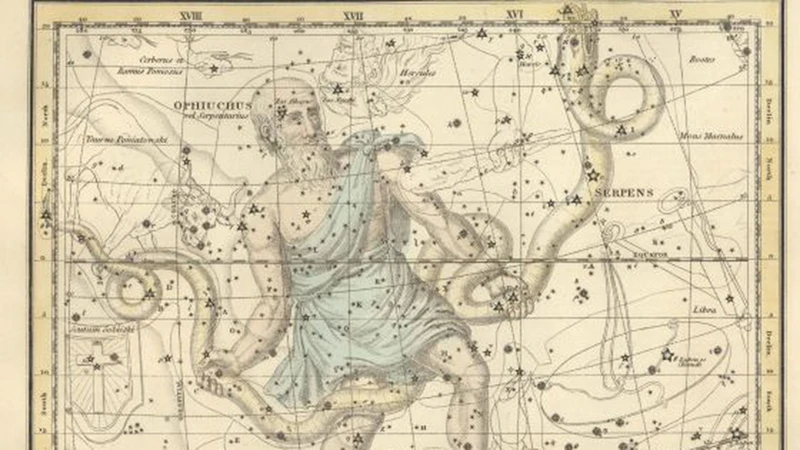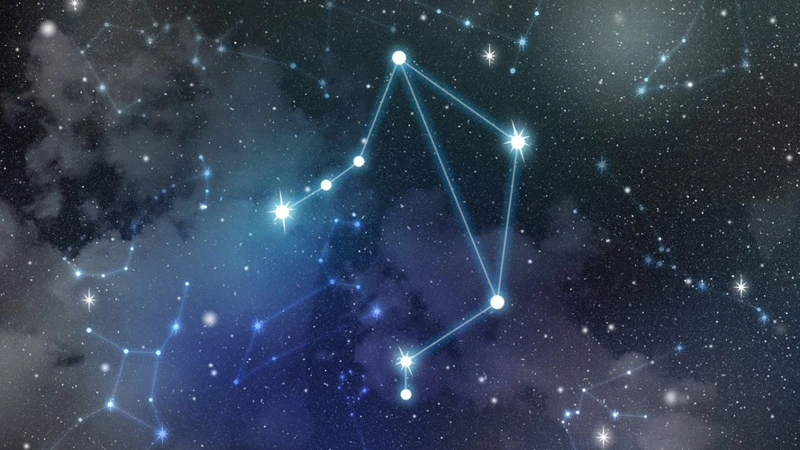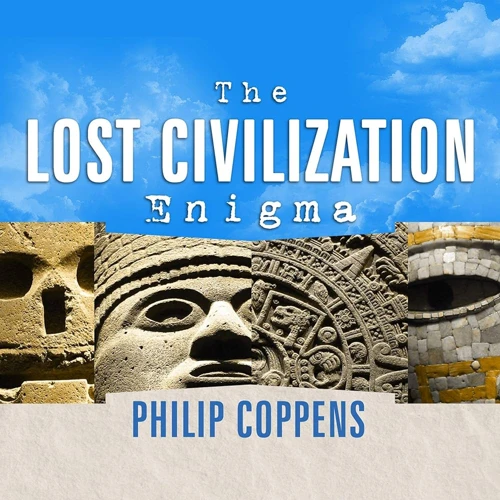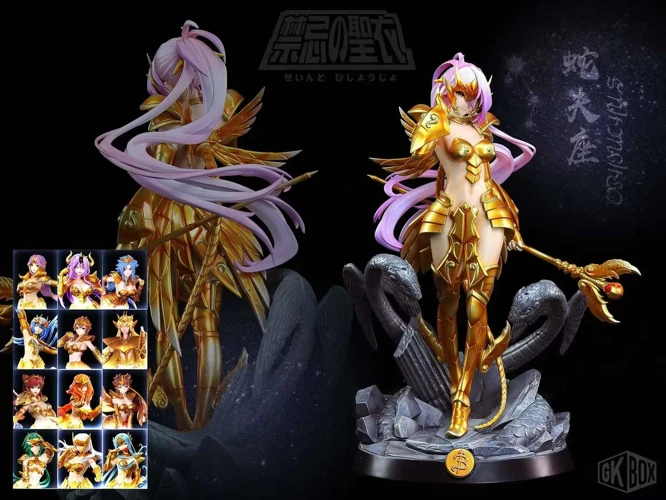The stars that twinkle in the night sky have fascinated humans for centuries. These celestial objects have been the subject of countless myths and legends across cultures around the world. From the powerful gods and goddesses of Ancient Greece to the majestic tales of Roman mythology, the constellations that dot the heavens have captivated our imaginations. But the stories behind these constellations go even further, transcending borders and continents. In this article, we will explore the mythological origins of the constellations, delving into the rich narratives of not only the Greek and Roman traditions but also those of ancient Egypt, Norse mythology, and even Chinese folklore. Join us on a journey through the cosmos as we uncover the captivating stories that have been woven into the very fabric of our starlit skies.
Contents
- The Ancient Greek Influences
- Roman Mythology in the Stars
- Stories from Other Cultures
- Conclusion
-
Frequently Asked Questions
- What are the different constellations influenced by Ancient Greek mythology?
- Who were the main Greek gods and goddesses associated with the constellations?
- How did the Greeks use constellations in their everyday lives?
- Are there any famous Greek heroes or heroines represented in the constellations?
- What is the story behind the constellation of Orion?
- How did the constellation Ursa Major come to be?
- Which constellation is associated with the goddess of love and beauty?
- Did the Greeks believe that the constellations influenced their lives?
- What is the difference between a constellation and an asterism?
- Can constellations be seen in different cultures and mythologies?
- References
-
Frequently Asked Questions
- 1. Why are constellations named after mythological stories?
- 2. Are all constellations named after Greek and Roman mythology?
- 3. How did ancient Greek mythology influence the constellations?
- 4. What is the story behind the constellation of Orion?
- 5. How is the story of Perseus connected to a constellation?
- 6. What is the significance of the constellation Ursa Major?
- 7. What is the story behind the Egyptian constellation of Orion?
- 8. How does Norse mythology relate to the constellation of Draco?
- 9. What is the story behind the Chinese constellation of the Black Tortoise?
- 10. How did different cultures interpret the same constellation?
- References
- Read More
The Ancient Greek Influences

Greek mythology has played a significant role in shaping the constellations we see in the night sky. The ancient Greeks believed that their gods and goddesses resided on Mount Olympus and controlled various aspects of the natural world. Many of these powerful deities found their way into the celestial sphere through captivating myths and legends.
One famous example of Greek mythology in the stars is the constellation Orion. According to legend, Orion was a great hunter who was eventually slain by a scorpion. As a tribute to his bravery, the gods placed him in the sky for eternity, surrounded by his hunting dogs, Canis Major and Canis Minor. Orion is easily recognizable by the three stars in his belt, which form a straight line.
Another popular constellation with Greek origins is Ursa Major, also known as the Great Bear. This constellation is said to represent Callisto, a beautiful maiden who caught the attention of Zeus, the king of the gods. To protect her from the jealous wrath of Zeus’ wife Hera, Callisto was transformed into a bear and placed in the sky. Ursa Major is easily identifiable by its distinct shape resembling a large spoon or ladle.
These are just a few examples of the many constellations influenced by Greek mythology. Each constellation has its own fascinating story, connecting the human experience with the celestial realm. Whether it’s the imposing figure of Hercules or the tragic tale of Andromeda, the Greek influences in the night sky continue to captivate stargazers and inspire wonder.
Learn more about the story of Hercules and his constellation in our detailed article.
Example:
| Constellation | Mythological Story |
|---|---|
| Orion | The legendary hunter Orion is placed in the sky, accompanied by his hunting dogs, Canis Major and Canis Minor. |
| Ursa Major | Callisto, a maiden transformed into a bear, is immortalized as the Great Bear constellation. |
Roman Mythology in the Stars

Roman mythology, heavily influenced by Greek mythology, also contributed to the creation of constellations that adorn our night sky. The Romans adopted many of the Greek gods and goddesses but gave them different names. This led to unique interpretations of the celestial figures and their stories.
One of the prominent constellations with Roman origins is the mighty Leo, representing the ferocious Nemean Lion. In Roman mythology, this lion possessed an impenetrable golden hide and terrorized the land. Hercules, in one of his twelve labors, slayed the lion and was rewarded by Zeus with a place in the stars. Leo is easily recognizable by its distinct lion shape and is associated with bravery and strength in Roman culture.
Another fascinating constellation tied to Roman mythology is Perseus, the renowned hero who famously slew the monstrous creature, Medusa. With the head of Medusa held high, Perseus was transformed into a constellation and placed in the heavens. This constellation serves as a reminder of courage and heroism.
Let’s explore a few more constellations influenced by Roman mythology:
- Virgo – This constellation represents the Roman goddess of agriculture, Ceres. Virgo is associated with fertility, harvest, and abundance.
- Pegasus – In Roman mythology, Pegasus is the divine winged horse. It was said that Pegasus was born from the blood of the slain Gorgon, Medusa.
- Cygnus – Cygnus is associated with the myth of Orpheus, a talented musician who could charm all creatures with his music.
Roman mythology blended seamlessly with Greek mythology in the realm of the stars. These captivating tales continue to inspire and intrigue us.
Explore the adventurous and optimistic traits of Sagittarius and its connection to Roman mythology in our detailed article.
Stories from Other Cultures

The stories behind the constellations extend beyond Ancient Greek mythology, encompassing rich narratives from various cultures around the world. In Egyptian mythology, the constellation Orion was associated with the god Osiris, representing his journey through the afterlife. The Norse culture had its own tales intertwined with the stars, with the constellation Draco symbolizing the mighty dragon Níðhöggr, who gnawed at the roots of the world tree Yggdrasil. Chinese mythology also left its mark on the night sky, with captivating constellations such as the Weaver maiden and the Cowherd, who were banished to opposite sides of the Milky Way. These diverse mythologies offer us a glimpse into the beliefs and imaginations of ancient civilizations, showcasing the universal human fascination with the cosmos and its profound significance in our collective storytelling.
Egyptian Mythology
Egyptian mythology also holds a rich tapestry of stories that have influenced the constellations we see in the night sky. The ancient Egyptians worshipped a pantheon of gods and goddesses, and these celestial beings were often associated with specific stars or constellations.
One prominent constellation in Egyptian mythology is Orion, depicted as the god Osiris. Osiris was a powerful deity associated with rebirth and the afterlife. The three stars in Orion’s belt were believed to represent the three pharaohs who built the Great Pyramids of Giza.
Another constellation influenced by Egyptian mythology is Sirius, the brightest star in the night sky. Known as the “Dog Star,” Sirius was associated with the goddess Isis. In Egyptian belief, Sirius marked the beginning of the annual flooding of the Nile, which brought fertility and abundance to the land.
In addition to these well-known constellations, Egyptian mythology has also influenced the depiction of other star clusters. For example, the constellation of Cassiopeia is believed to represent the queen of Ethiopia from Egyptian mythology. She was depicted as a beautiful but vain woman who was punished by being placed upside down in the sky, forever circling the North Star.
The influence of Egyptian mythology on the constellations showcases the cultural significance of the stars and their connection to the divine in ancient Egyptian society. These stories served to explain natural phenomena and guide the lives of the people, intertwining the earthly and celestial realms.
To explore more about the fascinating phenomenon of black hole jets and its relevance to the cosmos, check out our detailed article.
Example:
| Constellation | Mythological Association |
|---|---|
| Orion | The god Osiris, associated with rebirth and the afterlife. |
| Sirius | The “Dog Star” associated with the goddess Isis and the annual flooding of the Nile. |
| Cassiopeia | Representation of the Queen of Ethiopia from Egyptian mythology, punished for her vanity. |
Norse Mythology
Norse mythology, rooted in the ancient Scandinavian cultures, is rich with fascinating stories and characters that have made their way into the constellations above us. One prominent constellation influenced by Norse mythology is the mighty Thor, known as the god of thunder. In the night sky, the constellation Thor can be recognized as a group of stars forming a hammer, Mjolnir, which is Thor’s weapon of choice.
Another well-known constellation from Norse mythology is Draco, the dragon. According to the Norse belief, Draco represents the serpent-like creature, Nidhogg, who dwells in the roots of Yggdrasil, the great cosmic tree that connects the nine realms of Norse cosmology. Draco is often depicted as a winding serpent in the night sky, creating a sense of mystery and wonder.
The constellation of Odin, the all-father and ruler of the gods in Norse mythology, is also present in the stars. Odin is associated with the constellation known as the Big Dipper or the Plough, which consists of seven bright stars forming a distinct shape resembling a ladle or a plow. In Norse mythology, Odin used his mystical powers to guide the souls of fallen warriors to the afterlife, and the presence of his constellation symbolizes his protective presence.
These are just a few examples of the constellations influenced by Norse mythology. The tales of gods, giants, and mythical creatures from the Norse pantheon continue to inspire and ignite the imagination of those who gaze upon the night sky. Exploring these constellations not only connects us to ancient cultures but also reminds us of the enduring power and influence of mythology throughout human history.
Example:
| Constellation | Mythological Story |
|---|---|
| Thor | The constellation Thor represents the god of thunder and is depicted as his mighty hammer, Mjolnir. |
| Draco | The constellation Draco symbolizes the serpent-like creature, Nidhogg, who resides in the roots of Yggdrasil. |
| Odin | The constellation associated with Odin is the Big Dipper or the Plough, representing his role as the guide of fallen warriors. |
Chinese Mythology
Chinese mythology has its own unique set of constellations and stories that have been passed down through generations. The Chinese people believed that the heavenly bodies were interconnected with the earthly realm and held great significance in their culture. The constellations played a crucial role in astrology and were used for navigation, timekeeping, and divination purposes.
One well-known constellation in Chinese mythology is the Azure Dragon, also known as the Azure Dragon of the East. This celestial creature is associated with spring and represents power, protection, and prosperity. The Azure Dragon is often depicted as a majestic dragon flying through the sky, and it is said to govern the eastern quadrant of the heavens.
Another prominent constellation in Chinese mythology is the Vermilion Bird, also known as the Vermilion Bird of the South. This magnificent creature symbolizes the season of summer and represents passion, courage, and transformation. The Vermilion Bird is often depicted as a mythical phoenix, radiating vibrant hues of red and orange, and it governs the southern quadrant of the sky.
The mythology surrounding these constellations goes beyond their symbolic representations. Intricate stories and legends are associated with them, often involving gods, heroes, and epic battles. These tales reflect the values, beliefs, and traditions of the Chinese culture, providing a unique perspective on the celestial wonders above.
The influence of Chinese mythology on the constellations is a reminder of the rich diversity of human storytelling. It shows how different cultures have found their own narratives in the vast expanse of the night sky, creating connections between the mortal and divine realms.
It is truly fascinating to explore the celestial wonders and mythological stories from cultures around the world, from the Greek influences discussed earlier to the captivating tales of Chinese mythology.
Conclusion

In conclusion, the mythological stories behind the constellations are a testament to the power of human imagination and our deep connection to the stars. From the influence of Ancient Greek mythology, where gods and heroes were immortalized in the night sky, to the fascinating narratives from other cultures such as Egypt, Norse mythology, and Chinese folklore, these celestial tales have left an indelible mark on our collective consciousness.
Through the stories of Orion, Ursa Major, and many others, we are reminded of the rich tapestry of ancient civilizations and their beliefs. The constellations not only served as a way to navigate the night sky but also as a source of inspiration and wonder for generations to come.
These mythological stories continue to be a source of fascination and intrigue, allowing us to glimpse into the minds of our ancestors and the worlds they created. They serve as a reminder that our relationship with the cosmos is more than just scientific exploration—it is a deeply rooted connection that transcends time and borders.
As we look up at the twinkling constellations on a clear night, let us remember the tales passed down through generations and the wonders they hold. The stories behind the constellations invite us to marvel at the beauty of the universe and to contemplate our place within it.
Example:
- Mythological stories behind the constellations are a testament to the power of human imagination.
- These tales serve as a reminder of our deep connection to the stars.
- Constellations are not just navigational tools but sources of inspiration and wonder.
- They allow us to glimpse into the minds of our ancestors and the worlds they created.
- The stories invite us to contemplate our place within the universe.
Frequently Asked Questions

What are the different constellations influenced by Ancient Greek mythology?
Ancient Greek mythology has influenced numerous constellations, including Orion, Ursa Major, Andromeda, Hercules, Pegasus, and Perseus, among others.
Who were the main Greek gods and goddesses associated with the constellations?
The Greek gods and goddesses associated with the constellations include Zeus, Hera, Apollo, Artemis, and Athena, among others. These powerful deities often played a role in the captivating myths behind the constellations.
How did the Greeks use constellations in their everyday lives?
The ancient Greeks used constellations for various purposes, from navigation at sea to marking the changing of seasons and agricultural cycles. The positions of the stars helped them determine the direction and time of the year.
Are there any famous Greek heroes or heroines represented in the constellations?
Yes, several famous Greek heroes and heroines are represented in the constellations. Some examples include Orion, Hercules, Perseus, Andromeda, and Pegasus, each with their unique stories and adventures.
What is the story behind the constellation of Orion?
According to the Greek myth, Orion was a skilled hunter who was eventually slain by a scorpion. The gods placed him in the sky as a tribute, where he can be seen with his hunting dogs, Canis Major and Canis Minor.
How did the constellation Ursa Major come to be?
The constellation Ursa Major represents the story of Callisto, a maiden who was turned into a bear by Zeus’ jealous wife Hera. To protect Callisto, Zeus placed her in the sky as the Great Bear.
Which constellation is associated with the goddess of love and beauty?
The constellation associated with the goddess of love and beauty, Aphrodite, is the constellation of Venus, also known as the planet Venus in our solar system.
Did the Greeks believe that the constellations influenced their lives?
Yes, the ancient Greeks believed that the constellations had an influence on their lives. They believed that the gods and goddesses associated with the constellations could bring blessings or misfortunes depending on their alignment.
What is the difference between a constellation and an asterism?
A constellation is a recognized pattern of stars, representing a specific figure or mythological character. An asterism, on the other hand, refers to a smaller pattern of stars within a constellation, often used for easier identification.
Can constellations be seen in different cultures and mythologies?
Absolutely! While we often associate constellations with Greek mythology, many different cultures and mythologies have their own unique interpretations and stories behind the stars in the sky.
References
- Myths about Constellations
- Myths of the Constellations – Greek Gods & Goddesses
- Book about mythology behind constellations
Frequently Asked Questions

1. Why are constellations named after mythological stories?
Constellations are named after mythological stories because ancient cultures used these stories to explain and understand the patterns they saw in the night sky. By associating these patterns with mythological figures, they were able to pass down their stories and beliefs through generations.
2. Are all constellations named after Greek and Roman mythology?
No, while many constellations have Greek and Roman origins, there are also constellations named after mythological stories from other cultures. For example, Egyptian, Norse, and Chinese mythology have also influenced the naming and interpretation of constellations.
3. How did ancient Greek mythology influence the constellations?
Ancient Greek mythology played a significant role in shaping the constellations we know today. The stories of gods, heroes, and mythical creatures were incorporated into the celestial patterns. For example, the constellation Orion is linked to the myth of a great hunter, while the Pleiades cluster represents the Seven Sisters in Greek mythology.
4. What is the story behind the constellation of Orion?
In Greek mythology, Orion was a skilled hunter who was eventually killed by a scorpion. To honor Orion’s accomplishments, the gods placed him among the stars as a constellation. The stars of Orion’s belt and his distinctive outline are easily recognizable in the night sky.
5. How is the story of Perseus connected to a constellation?
Perseus, a hero in Greek mythology, slayed the Gorgon Medusa and saved Princess Andromeda. To commemorate his deeds, the constellations of Perseus, Andromeda, and Pegasus were named after these characters. The Perseus constellation is often depicted holding the head of Medusa.
6. What is the significance of the constellation Ursa Major?
Ursa Major, also known as the Big Dipper or the Plough, holds great significance in various cultures. In Greek mythology, Ursa Major represents Callisto, a nymph who was transformed into a bear by the goddess Hera. The constellation is easily identifiable and has been used for navigation and storytelling throughout history.
7. What is the story behind the Egyptian constellation of Orion?
In Egyptian mythology, the constellation of Orion corresponds to the god Osiris. According to the myth, Osiris was murdered by his brother Set and then resurrected. The position of Orion in the night sky was believed to align with Osiris’ journey through the afterlife.
8. How does Norse mythology relate to the constellation of Draco?
In Norse mythology, Draco is associated with the serpent Jormungandr, who is a significant character in the Ragnarok, the Norse end-times myth. It is believed that during Ragnarok, Jormungandr’s battles with other mythological figures caused the violent shaking of the Earth, which influenced the appearance of the constellation.
9. What is the story behind the Chinese constellation of the Black Tortoise?
In Chinese mythology, the Black Tortoise, also known as Xuanwu, is one of the Four Symbols that represent the cardinal directions. Xuanwu is a combination of a tortoise and a serpent and is associated with the North. The constellation represents protection and longevity in Chinese culture.
10. How did different cultures interpret the same constellation?
While different cultures may have different mythological stories associated with the same constellation, there are often common themes. For example, many cultures see the constellation of Orion as a hunter or a great warrior. These shared interpretations demonstrate the universal human fascination with the stars and our desire to find meaning in the cosmos.







